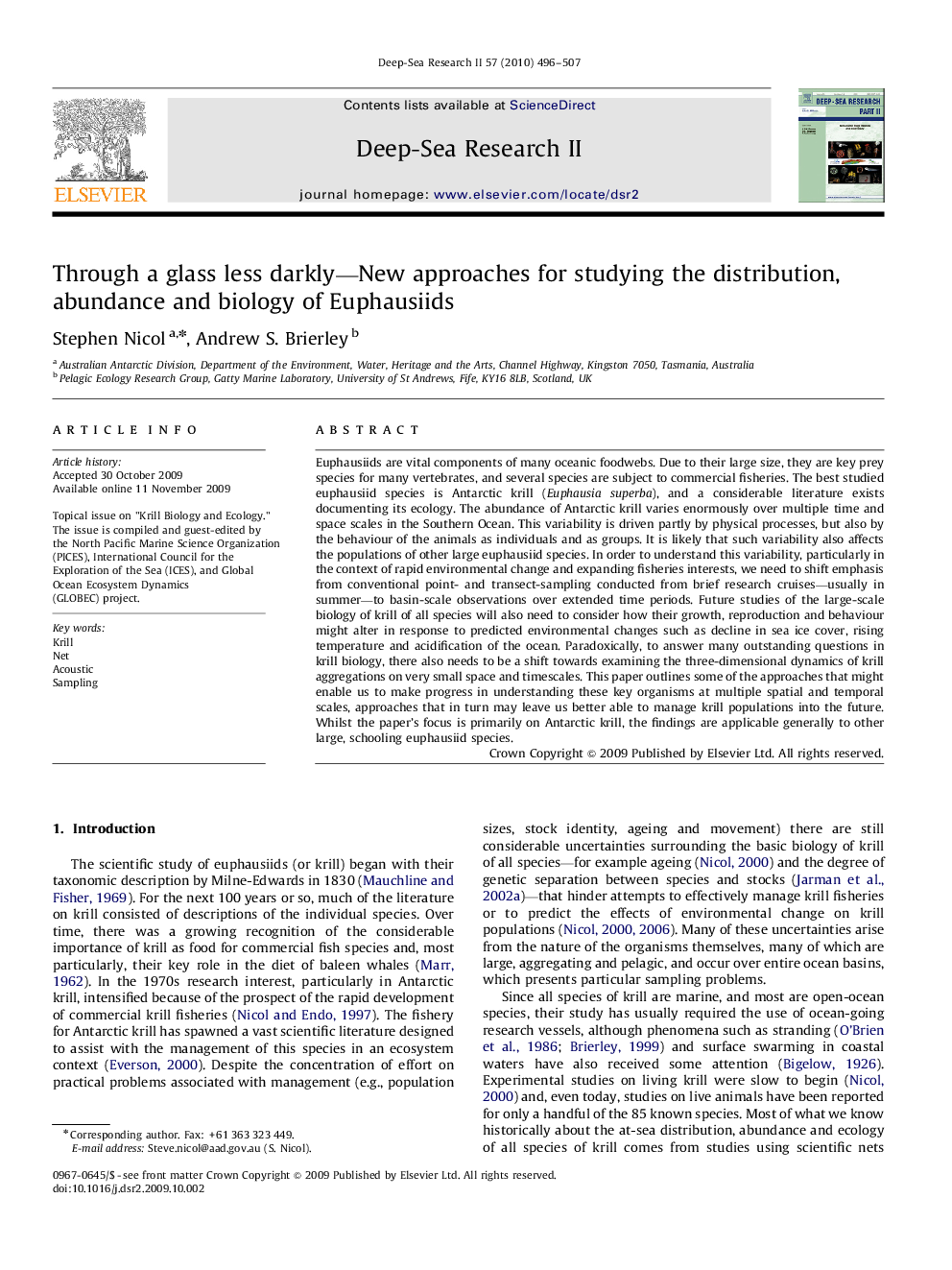| کد مقاله | کد نشریه | سال انتشار | مقاله انگلیسی | نسخه تمام متن |
|---|---|---|---|---|
| 4537039 | 1626477 | 2010 | 12 صفحه PDF | دانلود رایگان |

Euphausiids are vital components of many oceanic foodwebs. Due to their large size, they are key prey species for many vertebrates, and several species are subject to commercial fisheries. The best studied euphausiid species is Antarctic krill (Euphausia superba), and a considerable literature exists documenting its ecology. The abundance of Antarctic krill varies enormously over multiple time and space scales in the Southern Ocean. This variability is driven partly by physical processes, but also by the behaviour of the animals as individuals and as groups. It is likely that such variability also affects the populations of other large euphausiid species. In order to understand this variability, particularly in the context of rapid environmental change and expanding fisheries interests, we need to shift emphasis from conventional point- and transect-sampling conducted from brief research cruises—usually in summer—to basin-scale observations over extended time periods. Future studies of the large-scale biology of krill of all species will also need to consider how their growth, reproduction and behaviour might alter in response to predicted environmental changes such as decline in sea ice cover, rising temperature and acidification of the ocean. Paradoxically, to answer many outstanding questions in krill biology, there also needs to be a shift towards examining the three-dimensional dynamics of krill aggregations on very small space and timescales. This paper outlines some of the approaches that might enable us to make progress in understanding these key organisms at multiple spatial and temporal scales, approaches that in turn may leave us better able to manage krill populations into the future. Whilst the paper’s focus is primarily on Antarctic krill, the findings are applicable generally to other large, schooling euphausiid species.
Journal: Deep Sea Research Part II: Topical Studies in Oceanography - Volume 57, Issues 7–8, April 2010, Pages 496–507